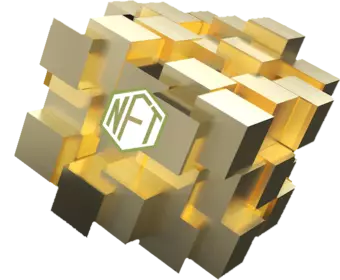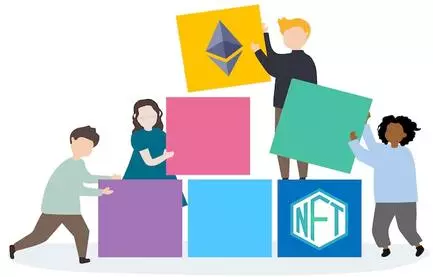Telegram
Skype
Signal

Gmail
UAE | India | USA | China | Germany | Japan | UK | Singapore | Australia | Italy | Canada
Art Blocks is an Ethereum-based platform that offers collectors worldwide unique, programmable, and on-demand generative NFT art. It accomplishes this through NFT drops, a method wherein a user mints an NFT and has no idea what they'll get.
If you're new to NFT, you're probably confused by some of these terms. Don't worry, everyone is fresh to conceptual frameworks such as NFT drops and generated art.
Art Blocks does more than just display and sell generative art; it also holds the artist's generative script and enables collectors to communicate with it, resulting in a one-of-a-kind output. The output is the artwork itself, with randomized variables that distinguish it from all previous script outputs.
In a nutshell, when a collector mints an artwork on Art Blocks, they're actually producing an Ethereum token. Because it's an NFT, that token is one-of-a-kind and carries a seed. The seed then allocates variables like color, geometry, and other rare features to the script's artistic output.
As a result, Art Blocks is similar to having an artist produce a customized on-demand artwork for you, with the blockchain assisting in the randomization of outputs. Is it a success story? Yes, it's a resounding yes.
Art Blocks alone sold approximately $600,000,000 in NFTs in August 2021, exceeding all other NFT platforms together. Art Blocks development projects such Tyler Hobbs' Fidenza series are commanding huge amounts of money per NFT on secondary markets.
Clearly, the Art Blocks paradigm is effective, but what precisely is that model? When it comes to NFT projects, Art Blocks has three tiers. Let's take a look at each level to see what Art Blocks has to offer.

The platform's top tier for creative art NFTs is Art Blocks Curated. At the Curated level, artists are given permission to make an NFT drop that will be included in the official Art Blocks collection.
Every project in the AB Curated is regarded as the cream of the crop in the realm of generative art NFT. While many AB Curated projects were inexpensive to produce when they were first launched (costing only a few hundred dollars), their value has increased thousands of times since then.

The Art Blocks platform houses generative projects that produce determinist results that can be verified. For each project, a generative script (using p5js, for example) is saved indelibly on the Ethereum blockchain. When a user wants to buy an iteration of a platform-hosted project, they buy an ERC721 compliant "non-fungible" token, which is also kept on the Ethereum blockchain and contains a provably unique "seed" that controls variables in the generative script. These variables, in turn, influence how the output appears and functions.
Take into account the Chromie Squiggle project as an example:
Each "seed," also known as a "hash string," is a hexadecimal string created at the time the token is issued in a pseudo-random way. Each character (0-9, a-f) represents a value between 0 and 15, whereas each pair of characters ("aa," or "f2") represents a number between 0 and 255.
The value of a hex pair in the seed, for example, determines the y-coordinate of each point in a squiggle. The initial color, gradient rate of change, number of points in each squiggle, and other surprise elements that make certain squiggles relatively rare than others are all controlled by hex pairs in the seed.
The result will be the same each time a squiggle is drawn to use a specific "seed." This denotes a "deterministic" project. Because Art Blocks projects must have a deterministic initial state, your token, which targets a single output of the algorithm saved for that project, is guaranteed to be one-of-a-kind.
When a project is published on the Art Blocks platform, the artist can adjust and change the code and settings until he or she is satisfied and ready to "lock" it. When a project is locked, all of its attributes are permanently frozen, including max iterations (the maximum number of iterations that can be minted), scripts, artist name, project name, and number of hashes generated. Because the artist will be unable to change the project's state, you can be sure that the result from your token's stored "seed" will be the same.
An artist can still change the description and price each iteration after a project has been locked if they want to tweak the price of a work to account for fluctuations in the price of Ethereum.
Because there are so many new vocabulary words, that sounds complicated. Let's have a look at how it all works in more detail.

Generative art is a type of art that is generated in part by using random elements to ensure that every piece is unique and created independently of the creator. A poet in the park, for example, producing a haiku out of words picked at random from the dictionary, is creating generative art.

The random element in Art Blocks is generated using an algorithm. Basically, you can browse the website as if you were looking for a piece of art for your living room on the internet. If you like something, you can buy it; but, instead of receiving a copy of what you ordered, an algorithm modifies the formula and creates a one-of-a-kind artwork in that style only for you. The result is a unique digital work of art that is everything from an experience to a 3-D rendering or a cartoon.
Everything on the internet needs to be saved somewhere, but you can't just load digital artwork into an Uhaul and transport it to your storage facility. Ethereum, one of the most popular blockchains, backs and stores all of the artwork on Art Blocks. That means you can't simply pay an artist for a piece of work. Instead, you create an Ethereum account and purchase an Ethereum compatible NFT with Ethereum's coin (non fungible token). A generative script recorded on Ethereum's blockchain then uses this NFT as the basis for creating your work.
In some ways, it's like purchasing an Amazon product that's been manufactured, sold on the Amazon platform, and sent from an Amazon warehouse. Blockchain technology is unique in that it is completely immutable—permanent, unchangeable, and unhackable. As a result, your digital art is a long-term investment that may be commonly held.
There are three categories of art on the Art Blocks platform:
The Art Blocks team selected these works as examples of the high degree of originality and execution achievable in crypto art. Because these works are reviewed by the platform and given special treatment on the internet, the artists who are chosen typically achieve fame and their work becomes quite valuable. The Curated part is Art Blocks' equivalent of a trip to the Louver or the Museum of Modern Art. Projects are released every three months.
After an artist has been selected for a curated collection, their new work can be found via the platform's Playground section. The fun name represents the fact that this is a place for artists to try new things and figure out what they want to do next with their projects. Art Blocks does not vet individual projects, but the artists have, so you know they're of excellent quality.
This is more of a free-for-all environment. Any artist can submit a piece to the Factory, and Art Blocks will review it to make sure it works and isn't blatantly plagiarized before releasing it. But that's all there is to it. Going to local galleries to see what's new, spot diamonds in the rough, and eat free cheese is similar to going to The Factory.
Creating NFT in Art blocks is a technical work and can’t be done on your own. The expert team of Tokyotechie knows how to create art blocks NFT and will help you with the algorithm and all the coding that is required for the creation. So instead of trying it on your own and wasting your energy , it's better to get in touch with the professionals.
Artists whose work has been selected for inclusion in our Curated Collection are free to use the Playground for future projects. These projects, as with all Art Blocks releases, must meet a quality level, however in the Playground, experimenting is welcomed.
Art Blocks Factory was designed for artists who did not want to wait for the curation board's permission or who were not chosen. This enables creative coders to publish a creation on Art Blocks and enter our community of world-class generative artists who have done so. Factory projects embody the innovation, originality, and artistic beauty connected with Art Blocks, albeit the requirements are less stringent than those in our Curated Collection.
Yes, the team is professional and highly qualified in creating the Art blocks NFT algorithm and are capable of helping you with the same.